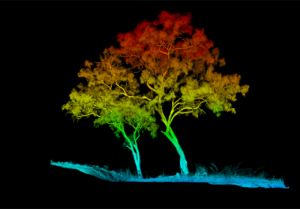23 November 2017
Emissions Reduction Fund (ERF) savanna projects allow land managers to minimise uncontrolled highly intense fires late in the dry season through early dry season fire management. There is a significant amount of carbon stored as woody debris – dead trees and logs – across Australia’s northern savannas. A new savanna sequestration draft methodology under the Emissions Reduction Fund credits land managers for any increases in carbon stored in this dead wood resulting from a change in fire management. This method is currently out for public comment here. Under that methodology, the estimates of dead wood stored are based on the best available data, but a Hub project led by Dr Garry Cook at CSIRO aims to provide more field data and analysis to improve the robustness of these estimates. Preliminary results indicate that the previous estimates may be conservative. In addition to using traditional methods of on-ground surveys, the project is also testing new technology – many hectares of Top End and Kimberley savannas have been surveyed using LiDAR technology to generate high-resolution three-dimensional images of live trees as well as dead wood. When repeated over time, LiDAR surveys can monitor changes to these features and will ultimately be able to provide an approach to accurately identify changes in the amount and distribution of carbon stored in wood across the savannas of the north.

Example of LiDAR imagery, Shaun Levick (CSIRO/CDU).
Want to know more about the Resilient Landscapes Hub's activities and our research into practical solutions to environmental problems? Stay informed about activities, research, publications, events and more through the Hub newsletter.
"*" indicates required fields